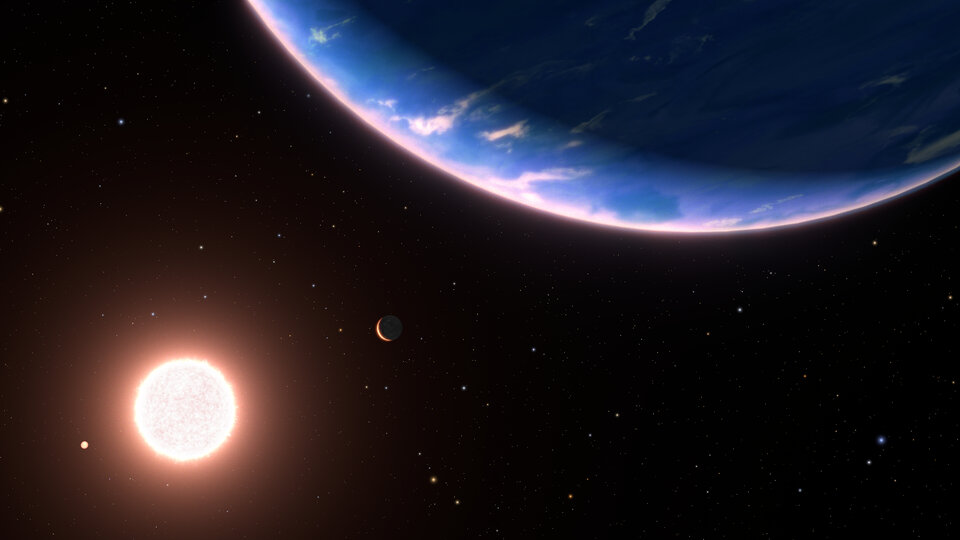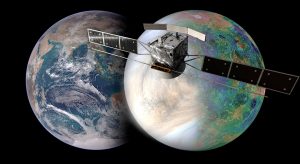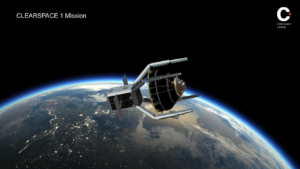Hubble Discovers Water In Atmosphere Of Small Exoplanet
29th Jan 2024
NASA and the European Space Agency’s (ESA) Hubble Space Telescope has located water in the atmosphere of a distant exoplanet. Measuring twice Earth’s diameter, the exoplanet is labelled GJ 9827d. It resides in the Pisces constellation – 97 light-years away from Earth, ESA said. Uniquely, this exoplanet is the smallest to hold water that astronomers have found thus far.
Research team member Björn Benneke, from the Université de Montréal, commented in a statement: “This would be the first time that we can directly show through an atmospheric detection that these planets with water-rich atmospheres can actually exist around other stars. This is an important step toward determining the prevalence and diversity of atmospheres on rocky planets.”
Finding GJ 9827d & Studying It’s Properties
GJ 9827d was first identified in 2017 when NASA’s Kepler Space Telescope was surveying distant galaxies. The discovery was then monitored by Hubble over 11 transits. According to ESA, this is the “events in which the planet crossed in front of its star”. That being a red dwarf star, and a complete orbit for the small exoplanet takes 6.2 days.
Much like Earth’s neighbour, Venus, GJ 9827d is very hostile. In that, its surface temperature is approximately 425 degrees celsius, and is completely uninhabitable. ESA described it as “[a] steamy world if the atmosphere were predominantly water vapour.” Hubble spent three years observing the planet, and probed the water vapour that drifted above GJ 9827d’s possible clouds.
Whilst GJ 9827d transited across its host star, Hubble tracked the “starlight [that] is filtered through the planet’s atmosphere and carries the spectral fingerprint of water molecules.” As such, ESA said “GJ 9827d could be an example of potential planets with water-rich atmospheres elsewhere in our galaxy.” Interestingly, ESA pointed out that if clouds float in GJ 9827d’s atmosphere, they must sit in a low position. This would explain why they haven’t obstructed Hubble’s view.
What Is GJ 9827d?
Although Hubble was able to capture elements of the small exoplanet, ESA noted it’s still early days for the discovery. Meaning, scientists are still unsure whether GJ 9827d holds a “small amount of water vapour in a puffy hydrogen-rich atmosphere”, ESA said. Or inversely, if the exoplanet is predominantly comprised of water. The latter would be explained by “a primaeval hydrogen/helium atmosphere evaporated under stellar radiation,” ESA added.
Nevertheless, the possibilities have engendered two theories that could explain how GJ 9827d possesses water vapour in its atmosphere. Whilst these theories offer the best reasoning, Hubble has provided an opportunity for NASA and ESA to use James Webb Space Telescope’s infrared spectroscopy instrument to monitor the planet further. Due to JWST’s superior instruments, it is able to paint a better picture than Hubble. For example, JWST is able to find other molecules in the planet’s atmosphere.
The Two Theories Scientists Have Deduced
Firstly, theory one is: “the planet is still clinging to a hydrogen-rich envelope laced with water, making it a mini-Neptune”, ESA said. Conversely, theory two explores the comparison between Europa, Jupiter’s Moon, which holds double Earth’s water under its icy crust. This comparison would mean GJ 9827d is a “warmer version,” ESA said. Benneke added: “The planet… could be half water, half rock. And there would be a lot of water vapour on top of some smaller rocky body.”
For the first theory, ESA said GJ 9827d’s formation must have occurred whilst temperatures were cold and ice was able to manifest. For this scenario, the planet would have “formed farther away from its host star.” Over time, ESA said, the planet would have voyaged closer to the red dwarf, soaking up radiation in the process.
Due to GJ 9827d’s meagre gravity, hydrogen would have “heated and escaped, or is still in the process of escaping”. Alternatively, their other theory is “that [GJ 9827d] formed close to the hot star, with a trace of water in its atmosphere,” ESA concluded.







Thank you for your comment! It will be visible on the site after moderation.